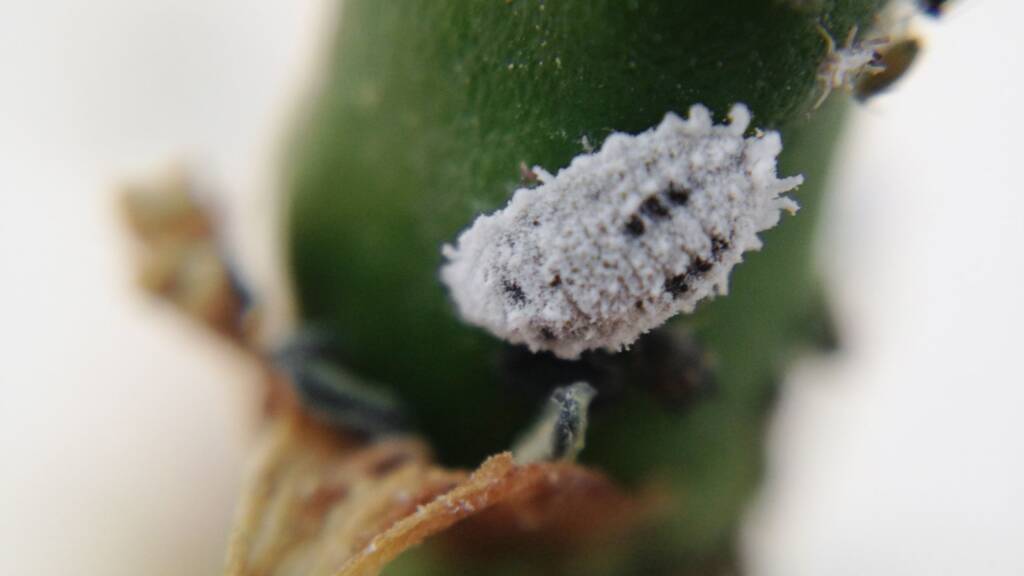
Plant pests are a major concern for gardeners and indoor plant enthusiasts. Here are ten of the most common pests, along with their identifying traits and ways to manage them.

1. Aphids
Appearance:
- Small, soft-bodied insects, often green, yellow, black, or red.
- Found on new growth, stems, and undersides of leaves.
Damage:
- Suck sap, causing stunted growth and curled or yellowing leaves.
- Excrete honeydew, leading to sooty mold.
Control:
- Spray plants with a strong jet of water.
- Use insecticidal soap or neem oil.
- Introduce natural predators like ladybugs.
2. Spider Mites
Appearance:
- Tiny, red, brown, or yellow pests that are hard to see with the naked eye.
- Produce fine webbing on leaves and stems.
Damage:
- Suck sap, causing yellowing, stippled leaves.
- Severe infestations can defoliate plants.
Control:
- Increase humidity and rinse leaves with water.
- Apply neem oil or miticides.
- Use predatory mites for natural control.
3. Mealybugs
Appearance:
- Small, white, cotton-like clusters on leaves, stems, and roots.
Damage:
- Feed on sap, weakening the plant and causing yellowing leaves.
- Secrete honeydew, attracting ants and encouraging sooty mold.
Control:
- Dab mealybugs with alcohol-soaked cotton swabs.
- Apply insecticidal soap or neem oil.
4. Scale Insects
Appearance:
- Oval, hard-shelled or soft-bodied insects that attach to stems and leaves.
- Appear as tiny bumps resembling plant growths.
Damage:
- Suck plant sap, causing yellowing leaves and stunted growth.
- Secrete honeydew, leading to mold.
Control:
- Scrape off scales with a soft brush.
- Use horticultural oil or systemic insecticides for heavy infestations.
5. Whiteflies
Appearance:
- Tiny, white, moth-like insects that swarm when the plant is disturbed.
Damage:
- Suck sap, causing yellowing and wilting of leaves.
- Transmit plant viruses.
Control:
- Use yellow sticky traps to capture adults.
- Spray neem oil or insecticidal soap on affected plants.
6. Thrips
Appearance:
- Slender, black or brown insects with fringed wings.
Damage:
- Scrape plant cells, causing silvery or white streaks and deformed leaves.
- Transmit plant viruses.
Control:
- Use blue or yellow sticky traps.
- Spray neem oil or insecticidal soap.
- Introduce predatory insects like lacewings or ladybugs.
7. Fungus Gnats
Appearance:
- Small, black, mosquito-like flies often found hovering around soil.
Damage:
- Larvae feed on roots, causing stunted growth and root rot in young plants.
Control:
- Let soil dry out between waterings.
- Use sticky traps to catch adults.
- Apply beneficial nematodes or mosquito dunks to control larvae.
8. Caterpillars
Appearance:
- Worm-like larvae of butterflies and moths, varying in size and color.
Damage:
- Chew holes in leaves, fruits, and stems, causing visible defoliation.
Control:
- Handpick caterpillars from plants.
- Use Bacillus thuringiensis (Bt) as a natural insecticide.
- Encourage birds or predatory insects.

9. Leaf Miners
Appearance:
- Larvae of flies, beetles, or moths that burrow inside leaves, leaving visible trails.
Damage:
- Create squiggly or blotchy patterns on leaves.
- Can weaken plants and reduce photosynthesis.
Control:
- Remove and destroy infested leaves.
- Use neem oil to disrupt the pests’ lifecycle.
- Introduce parasitic wasps.
10. Slugs and Snails
Appearance:
- Soft-bodied mollusks with or without shells, active during damp, cool conditions.
Damage:
- Chew large holes in leaves and fruits.
- Leave slimy trails on plants and soil.
Control:
- Handpick during early morning or evening.
- Use barriers like crushed eggshells or copper tape.
- Apply iron phosphate-based slug baits.
Preventive Measures:
- Inspect Plants Regularly: Check for signs of pests, especially on new growth and undersides of leaves.
- Quarantine New Plants: Isolate new additions to your collection for a few weeks.
- Maintain Plant Health: Healthy plants are less vulnerable to pests. Provide proper light, water, and nutrients.
- Clean Plant Area: Remove dead leaves and debris to reduce hiding spots for pests.
By staying vigilant and applying appropriate treatments, you can keep your plants pest-free and thriving! 🌱


